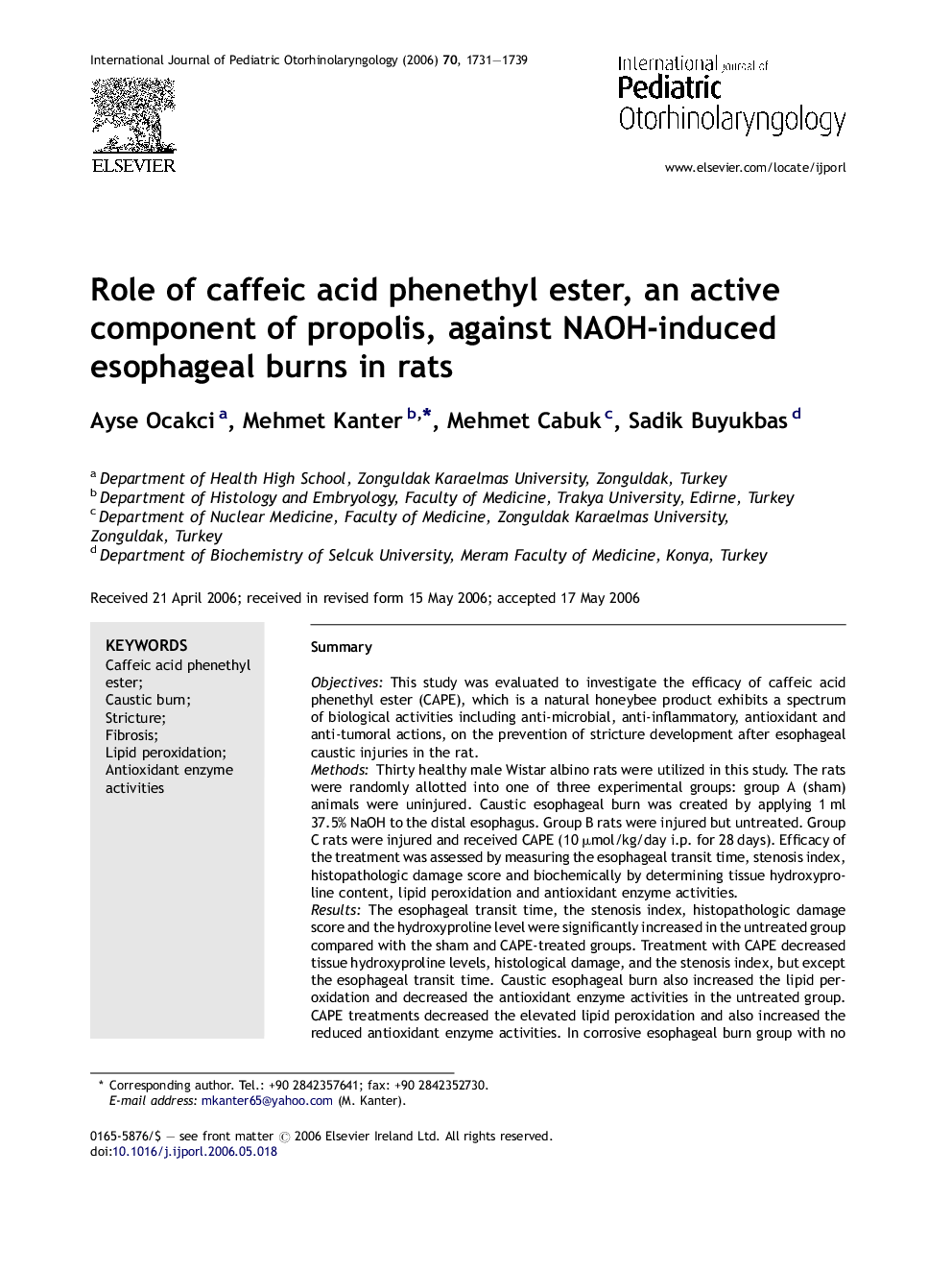| کد مقاله | کد نشریه | سال انتشار | مقاله انگلیسی | نسخه تمام متن |
|---|---|---|---|---|
| 4115768 | 1606102 | 2006 | 9 صفحه PDF | دانلود رایگان |

SummaryObjectivesThis study was evaluated to investigate the efficacy of caffeic acid phenethyl ester (CAPE), which is a natural honeybee product exhibits a spectrum of biological activities including anti-microbial, anti-inflammatory, antioxidant and anti-tumoral actions, on the prevention of stricture development after esophageal caustic injuries in the rat.MethodsThirty healthy male Wistar albino rats were utilized in this study. The rats were randomly allotted into one of three experimental groups: group A (sham) animals were uninjured. Caustic esophageal burn was created by applying 1 ml 37.5% NaOH to the distal esophagus. Group B rats were injured but untreated. Group C rats were injured and received CAPE (10 μmol/kg/day i.p. for 28 days). Efficacy of the treatment was assessed by measuring the esophageal transit time, stenosis index, histopathologic damage score and biochemically by determining tissue hydroxyproline content, lipid peroxidation and antioxidant enzyme activities.ResultsThe esophageal transit time, the stenosis index, histopathologic damage score and the hydroxyproline level were significantly increased in the untreated group compared with the sham and CAPE-treated groups. Treatment with CAPE decreased tissue hydroxyproline levels, histological damage, and the stenosis index, but except the esophageal transit time. Caustic esophageal burn also increased the lipid peroxidation and decreased the antioxidant enzyme activities in the untreated group. CAPE treatments decreased the elevated lipid peroxidation and also increased the reduced antioxidant enzyme activities. In corrosive esophageal burn group with no treatment, the most consistent findings were degenerative changes and increased in submucosal collagen content, and the luminal narrowing. CAPE treatment protected esophagus. Nevertheless, there was the slight increase in submucosal collagen.ConclusionsIt is concluded that CAPE has a preventive effect on the stricture development after esophageal caustic injuries in the rat.
Journal: International Journal of Pediatric Otorhinolaryngology - Volume 70, Issue 10, October 2006, Pages 1731–1739